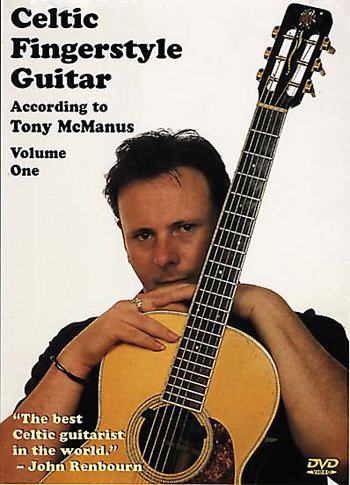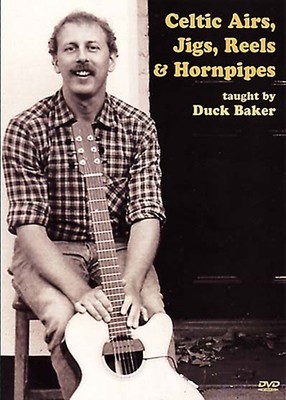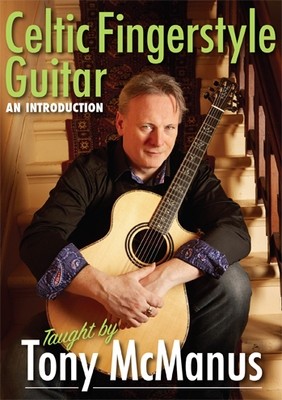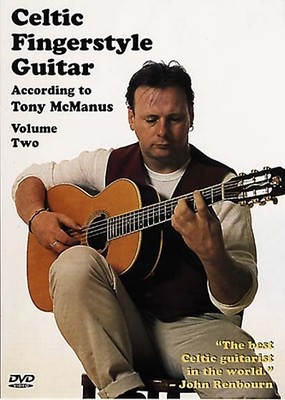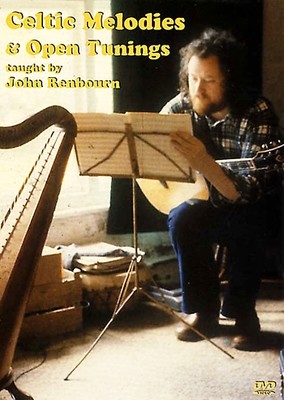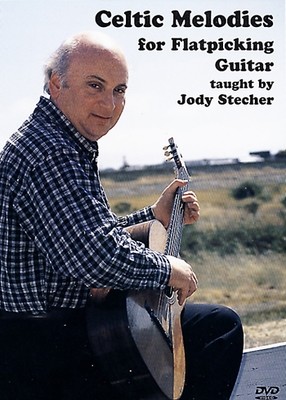
Celtic Fingerstyle Guitar: Volume 1 - taught by Tony McManus
"Tony McManus is the best Celtic guitarist in the world." - John Renbourn
Tony McManus is an adept master of Celtic fingerstyle guitar, both in terms of adapting Celtic music to the guitar, and in its performance – presenting all its intricacies, graces, and frills, yet at the same time maintaining the pace and drive which characterizes the style of this music.
In this first lesson, Tony discusses in detail the importance of ornamentations and triplets in Celtic music and how this can be technically achieved. He illustrates these ideas with several melodies played in a Dropped D tuning. This is followed by a discussion of scales and fingerings and playing reels in the DADGAD tuning. This is a challenging lesson for the fingerstyle guitar student interested in learning Celtic music from one of the finest players of this idiom.
Titles include: Dropped D tuning: The Islay Ranters Reel, Ye Banks and Braes, The Ewie wi’ The Crooked Horn. DADGAD TUNING: Hector The Hero, Catherine Kelley’s, Charlie Hunter’s Jig, Jackie Coleman’s Reel
94 minutes • Level 3/4 • Detailed tab/music PDF file on the DVD
Review: Tony McManus is a Scottish guitarist who made a splash when he debuted at the Edinburgh Folk Festival in 1995. Since then he has released a solo guitar album and toured with Brian McNeill and Alastair Fraser. John Renbourne has called McManus "the best Celtic guitarist in the world." McManus's reputation is based partly on his uncanny ability to translate fiddle and bagpipe tunes to the acoustic guitar, and make them sound like they were written for the guitar. His playing is relaxed and fluid and the finger-style technique provides a harp-like quality to his sound at times. His precise use of ornamentation can also mimic the fiddle and the bagpipes.
In addition to McManus's obvious skill as a musician, these videos illustrate his abilities as a teacher. The videos are quite conversational, with an easy, relaxed pacing and McManus's dry sense of humor. Volume One begins by discussing the Celtic genre, as well as some ideas about translating Celtic music to the guitar. He begins with "Islay Ranter's Reel" (in dropped-D tuning). McManus explains the music and the technique thoroughly. For example, he discusses the use of ornaments and how to achieve them without sacrificing the strong sense of rhythm which marks Celtic tunes. One of the lessons in the first part of this video is the importance of an "economy of movement" in the right hand. McManus also spends some time working on triplets, including how to play triplets with the thumb (thus making it more efficient to do them on any string). The video uses a split screen during the tunes, showing both hands at work.
For each of the seven tunes on the first volume, McManus discusses some of its features, plays it through, talks about it a bit more, and then slows it down and plays it in segments. Other tunes include the classic, "Ye Banks and Ye Braes" (where he explains his arrangement and how it was developed), the strathspey "The Ewie wi' the Crooked Horn" (with its dense rhythmic complexity) and four tunes in DADGAD tuning. However, before moving to the DADGAD tunes he goes over scales and fingerings and a general approach to the tuning. Thus, he makes sure that people are comfortable in the new tuning before going on. This is a nice addition, and one which is often absent when guitarist instructors move abruptly from one tuning to another. His version of "Jackie Coleman's Reel" will leave many guitarists in the dust, but it is inspiring to watch the precision of fingerstyle guitar well-played. Another DADGAD tune, a lush rendering of "Hector the Hero," features a fine use of false harmonics (and he explains this technique fully).
The second volume is focused more specifically on Scottish music, including jigs (single, double and slip), reels, pipe marches and strathspeys. He features several unusual tunings which are especially designed for bagpipe tunes. He starts off with a march, strathspey and reel, "Irene Meldrum's Welcome to Bon Accord/Hecla/The Ramnee Ceilidh." In general, there is more complex ornamentation and playing in Volume Two, and the teaching of the first set of tunes takes over 30 minutes. As McManus introduces the tunes, he tends to make some comments about their provenance. Another highlight of volume two is "The Seagull," a tune in DAAEAE. Throughout, McManus illustrates valuable lessons about how to integrate the ornamentation styles of other instruments into the guitar's repertoire.
The package includes booklets with all of the tunes in tablature and standard notation, as well as some notation of ornamentation. The instruction is geared toward students at the intermediate to advanced level. This is an impressive set of videos with awe-inspiring playing, a solid teaching approach, and useful playing tips for a wide variety of acoustic guitarists. – Dirty Linen
